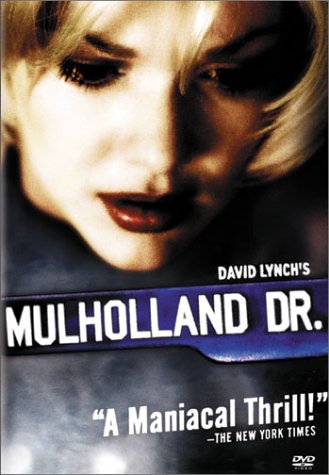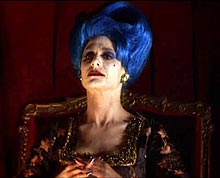The Mulholland Dream
 After re-watching what I view as a leader in narrative complexity, I am still left with many questions about David Lynch’s Mulholland Dr. While I have a basic theory that I have developed from my own viewing experience and perusing the essays at mulholland-drive.net, it is far from complete and even further from solving all of the mysteries involved in the epic narrative
After re-watching what I view as a leader in narrative complexity, I am still left with many questions about David Lynch’s Mulholland Dr. While I have a basic theory that I have developed from my own viewing experience and perusing the essays at mulholland-drive.net, it is far from complete and even further from solving all of the mysteries involved in the epic narrative
**SPOILER ALERT: I strongly recommend viewing this film before reading any analysis**
I tend to agree with Alan Shaw’s Interpretation of the plot. While I didn’t notice the clues, during my first viewing of the movie, after the second time through things become more clear. During the dream sequence of the movie, Betty represents Diane as she was first arriving in Hollywood, excited, anxious and innocent. Through creating Betty, Diane is hoping to relive her early days in Hollywood, and change the outcomes. However much she tries though, she is unable to change the products of her life as noted by the entire disappearance of Betty at the end of the dream sequence. Rita represents what Diane envisions as the fall, but not death of Camilla. Someone whom she (Betty/Diane) can love, but who does not wield power or success over her. Camilla in the dream is given blonde hair as an allusion towards Betty/Diane wanting to be the star and therefore her own mind attempts to show her that that is the case in this dream world.
While some of these ideas do differ from Mr. Shaw’s, these are the core interpretations I have pulled from my two viewings of the film. I agree with all of the other aspects of Shaw’s interpretation. There are still a few holes in my/Shaw’s interpretation that I need to sort out. I have only had the time to read through Shaw’s most basic interpretation so some of the holes I bring up may be covered in his later more in depth analysis.
The Cowboy has been called a Godly figure, and I agree with that assessment. Especially with the let there be light allusion, the deep questions,

and the buggy analogy. However I do not understand his significance to the film. Why does he appear at the end of the dream sequence waking the dreaming Diane, and also why does he appear at the dinner party. The coffee cup similarities are also puzzling me, as pointed out in the visual echoes gallery at mulholland-drive.netI feel that there is a significance there that I just can’t explain without further exposure to the film.
Another puzzling aspect is the bum releasing the grandparents out of the blue box. I agree with Shaw’s assessment that the bum is the twisted and

tormented part of Diane that ordered the hit on Camilla, but why is it using the grandparents to hurt Diane, I feel like the bum was enough to torment Diane and do not see the significance of the elderly. Finally the blue haired lady, who oddly resembles Aunt Ruth and sits in silence at the club has me baffled. What is her purpose and significance, I can only hope to discover this with further viewings.
Mittell talks about narrative complexity as “experimentation and innovation challenging the norms of what the medium can do,” and I believe that Mulholland Dr. does just that. Films are generally portrayed in a linear timeline, with blatant statements as to the plot or fairly obvious clues in the case of a mystery thriller. David Lynch turns that formula on it’s head by leaving subtle clues throughout his scrambled up timeline, and leaving the film open to several different interpretations. The film is designed to make the audience think about what has happened not just blindly entertain them.
Mittell also sites that narrative complexity comes from story arcs that are able to be expanded beyond episodes to entire seasons. While this may be a stretch in applying this to the film medium, I feel like Mulholland Dr. had 3 different story arcs. The dream sequence was the first, the reality sequence was the second, and the entire movie encompasses the third. If you only see one of the first two sequences the movie makes no sense. It is only after you see both the dream and reality sequences that you can piece together what is actually going on in the film.
Personally I love any media that makes me think about what has happened. WatchingMulholland Dr. while frustrating was also invigorating. The fact that there is so much going on, and so many hidden clues and interpretations is truly exciting to me. However many audiences are split when it comes to narrative complexity. I understand that at certain points people use film to escape from thought, to simply relax and enjoy themselves after a long day or enjoying some time with friends.
Complex narratives appeal to those who truly enjoy analyzing everything that is going on. Those who look beyond what is being presented and see what is actually being said. This turns many people away because they simply do not want to expend the time and/or effort to analyze what they consider pure entertainment. However, good storytelling does exist outside of narrative complexity. Remember the Titans, in my opinion, is a story that is expertly told and while there are complexities there I would not describe the movie as narratively complex. Good storytelling does not rely on narrative complexity, but narrative complexity requires good storytelling.